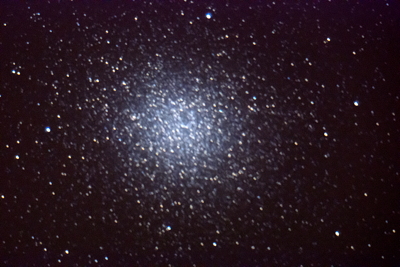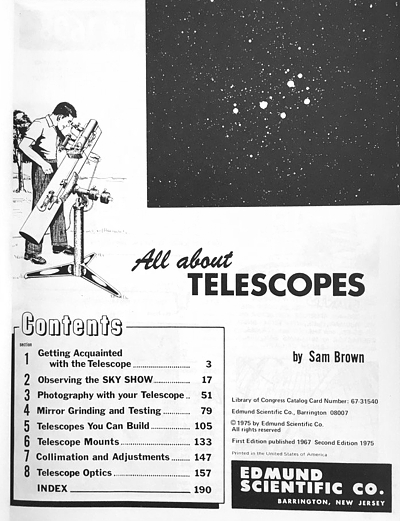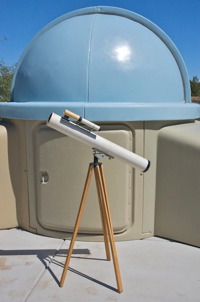Jupiter Livestreamed, Jupiter DSLR, StarLock Tests
Posted: 3 May 2016
Monday, 25 April 2016, through Sunday, 1 May, was cloudy with periods of strong winds and some rain. On Tuesday, 26 April, I went to the observatory to repair one of the seals by a dome pivot. The L-rubber had recently torn:

I replaced the torn piece and applied new sealant:

The sky finally cleared on Monday, 2 May.
|
Open: Monday, 2 May 2016, 1822 MST Temperature: 87°F |
Session: 954 Conditions: Mostly clear, hazy |
Equipment Used:
12" f/8 LX600 w/StarLock
Wired AutoStar II handset
2" 24mm UWA eyepiece
2" 8-24mm zoom eyepiece
1.25" 26mm eyepiece
2X PowerMate
3X TeleXtender
Camera:
iPhone 6s Plus
D7200 DSLR
[To the right is a new feature I am adding to the Cassiopeia Observatory reports. The box shows the equipment I used during the session. I hope this helps readers.]
Upon opening the observatory I synced the observatory clock to WWV using the observatory shortwave radio receiver. I used the wired AutoStar II handcontroller this session in order to do some Wi-Fi tests now that the telescope is mounted on the pier. I then checked the pier/mount leveling since it had been over a week since the pier had been installed. I wanted to ensure there had been no shifting; there wasn't.
1839 MST: moved the dome onto the POD Zenith Table (PZT). 1841 MST: 12" LX600 turned ON, StarLock OFF. 1842 MST: viewed Jupiter, 102X. The Great Red Spot was visible nearing Jupiter's limb. Switched to the Baader Zoom 8-24mm Eyepiece. Best view of Jupiter was at 203X (12mm).
Powered on the GC Wi-Fi Adapter and tested SkySafari 5 Pro and ScopeBoss telescope control from the iPhone 6s Plus. All was OK.
1910 MST: sunset. Mounted the SteadyPix Universal Smartphone Telescope Photo Mount on the telescope with the 26mm eyepiece + 3X TeleXtender (281X). Added a Variable Polarizer Filter set to reduce Jupiter's brightness. I then did a 17 minute Twitter Periscope livestream of Jupiter, which was very well received by viewers. Here is a 12 second video from the livestream broadcast:

Click or tap on image for video
1934 MST: began setting up for D7200 DSLR imaging. Mounted the DSLR at prime focus + 2X PowerMate + 3X TeleXtender. Did some HD video recordings, 1.3X crop factor, 60 fps, at various exposure settings as a test since this was my first attempt at Jupiter imaging at such a large magnification with the new 12" telescope. This is a stack of 1236 frames, 1/200sec, ISO 6400:

The video was somewhat underexposed. Will try different settings on the next session. The image above has been downscaled about 50% and shows some image processing artifacts.
1953 MST: ended Jupiter imaging. Viewed Jupiter, 102X. The four Galilean Moons were visible.
2014 MST: StarLock ON. With the telescope pier mounted and polar aligned (done on the previous session) I decided to re-do the Right Ascension (RA) Periodic Error Correction (PEC) training. Used the star Denebola. The StarLock automatic PEC training (including two updates) took until 2153 MST to complete. For some reason an error occurred during the final (2nd) PEC training update, but it successfully completed on the second try.
Did a GOTO M104 (Sombrero Galaxy); nice view at 102X. Mounted the DSLR at prime focus to do a StarLock guiding test. First I started a StarLock Automatic Rate Calibration (ARC) using Spica. For some reason that process was taking way longer than it should and I finally aborted it. I manually entered guiding percentages of RA 10% and DEC 10% (which another LX600 user had indicated worked well for him).
2203 MST: Mars was rising over the hill to the southeast. 2235 MST: Saturn rising over the hill.
Went back to M104, which was visible in the DSLR viewfinder. Set the White Balance to 4000K. Did 30 second, 2 minute, and 5 minute exposures. A slight guiding error was seen in the 2 minute exposure and bad guiding was seen in the 5 minute exposure. Will have to do more work with the StarLock settings to get it guiding correctly. I also imaged the Omega Centauri globular cluster, which was low in the southern sky. Here are the best images. M104 (left), 2 minutes, ISO 3200; Omega Centauri (right), 30 seconds, ISO 3200:


2257 MST: ended the imaging tests. StarLock OFF. Viewed Omega Centauri, 102X. Nice. Lots of stars in the globular cluster were visible.
2307 MST: viewed Mars, 102X. Then Saturn, 102X. Both planets were too low in the sky for good viewing, but some surface details were visible on Mars and Saturn's ring was nicely open for viewing.
Then began closing up.
|
Close: Monday, 2 May 2016, 2322 MST Temperature: 57°F |
Session Length: 5h 00m Conditions: Clear |
I have posted my review of the Pier-Tech 1 Pier and Eyepiece Tray. I have also updated my review of the Netatmo Weather Station to include the newly available Wind Gauge.
I love reading old astronomy books. This 1967 classic from Edmund Scientific Co. was in the batch of astronomy books I received recently and read:

One of the appeals of this book is that my first telescope was an Edmund Scientific 3" Newtonian Reflector in 1961, which I still have:


Wayne Parker, owner and dynamic force of SkyShed Observatories, recently posted this on the SkyShed POD Yahoo Group:
I really appreciate those stepping up when members ask questions. If you don't answer, I must. Can't leave people hanging if we can help it.
Mike Weasner's resources are great for any POD owner. As well many of you have informative websites, blogs, Facebook pages, etc. Thank you for those.
Little known fact - Did you know that Lorelei and I were big fans of Mike Weasner's "Mighty ETX" website and related websites for years in the late 90's and early 0's. For all Meade ETX owners, Mike had everything you ever needed to know, and more. We actually still have our ETX, waiting patiently in a box.
It was a real treat when Mike contacted us years ago to find out about putting in a GPOD. Now it's years later and Mike's info is just as great about POD and related equipment as it was 15 years ago with the ETX site.
Thanks to everyone who answer questions, post helpful info, help guide others who are beginning their journey.
Couldn't do it without you. Thanks for having our back!
Comments are welcome using Email. Twitter users can use the button below to tweet this report to your followers. Thanks.
Cassiopeia Observatory Home Page
Copyright ©2016 Michael L. Weasner / mweasner@me.com
URL = http://www.weasner.com/co/Reports/2016/05/03/index.html
